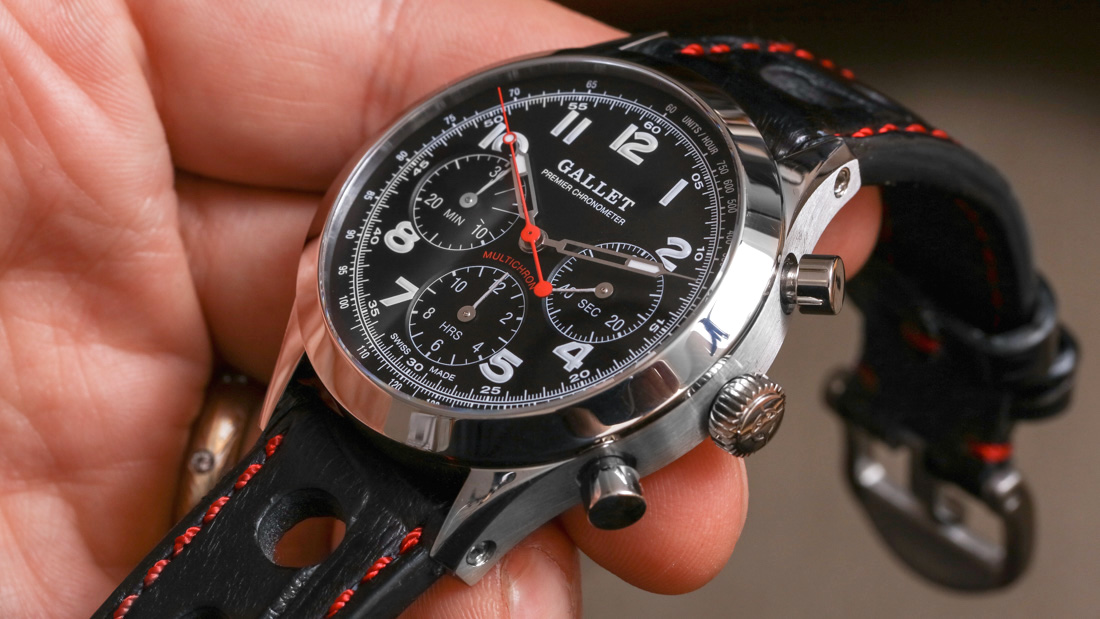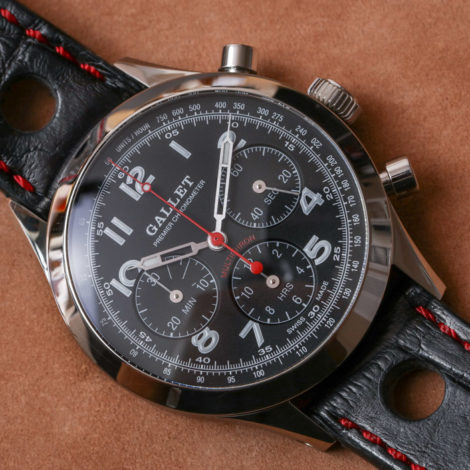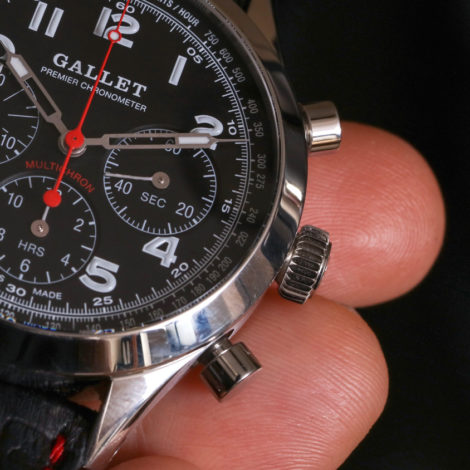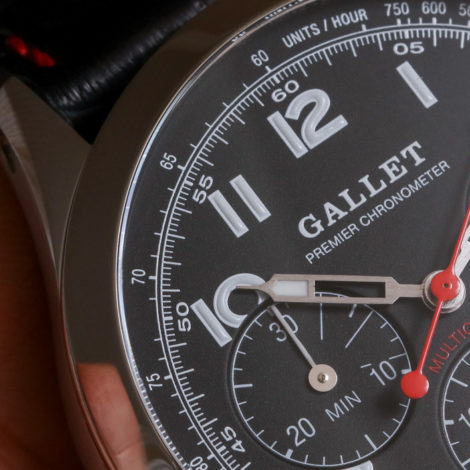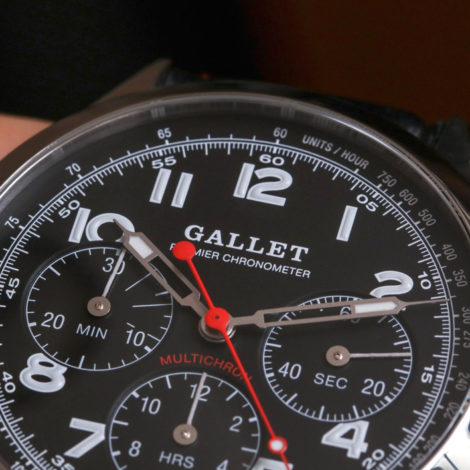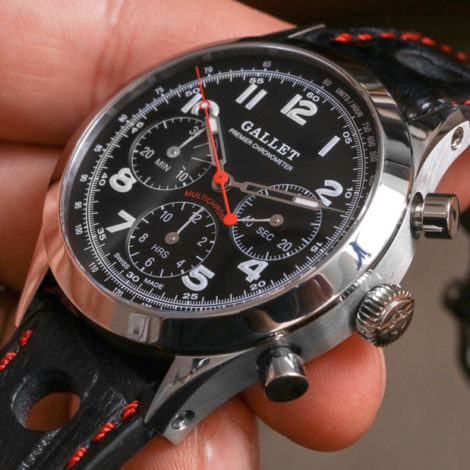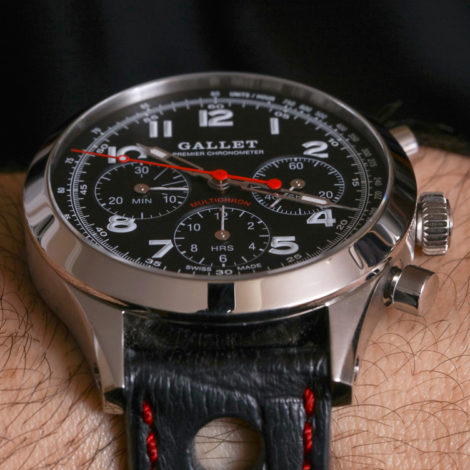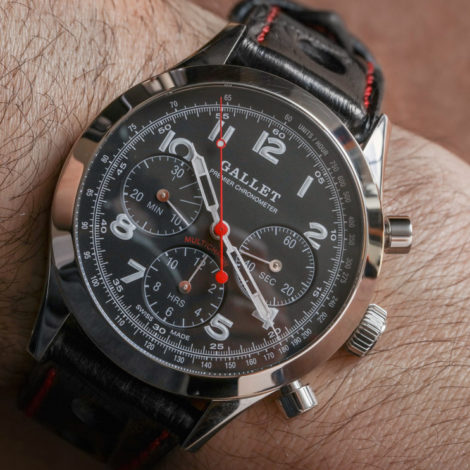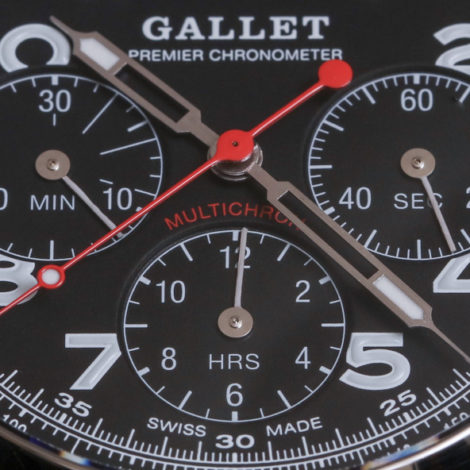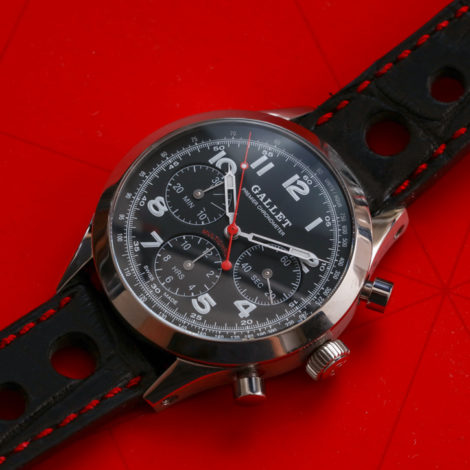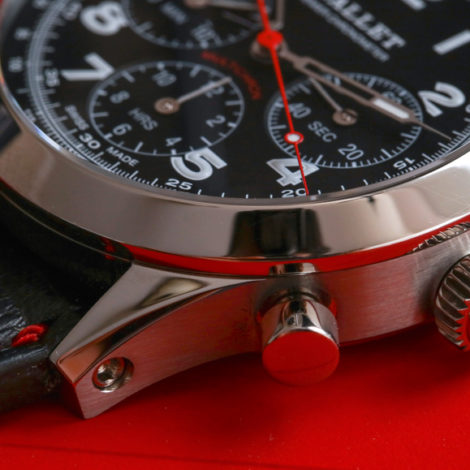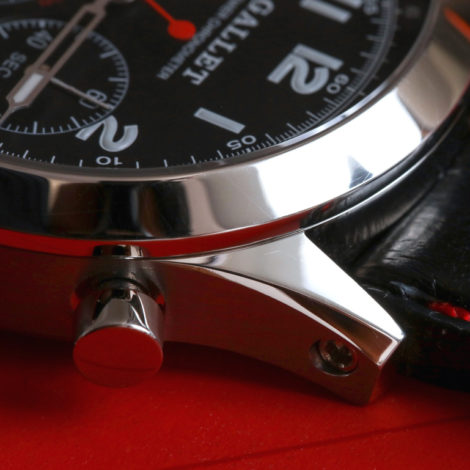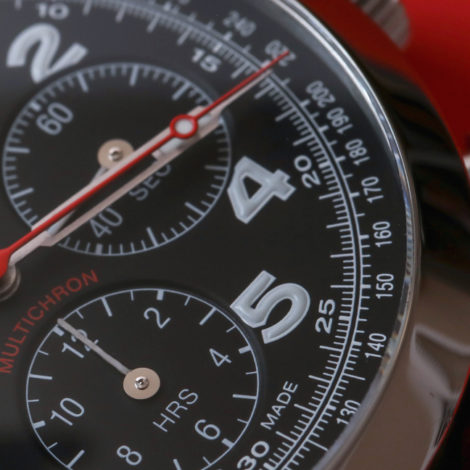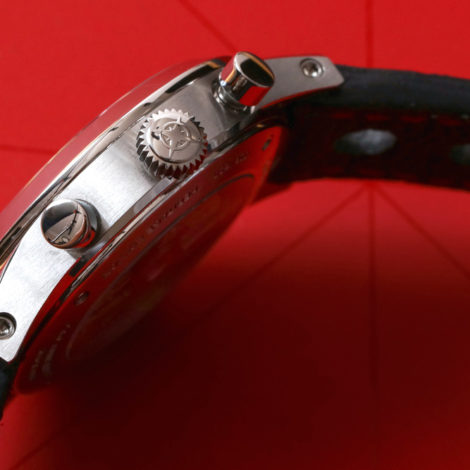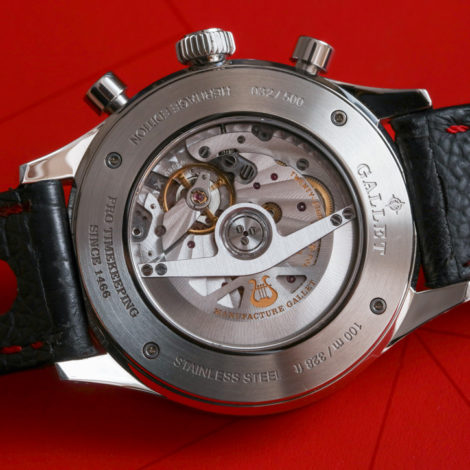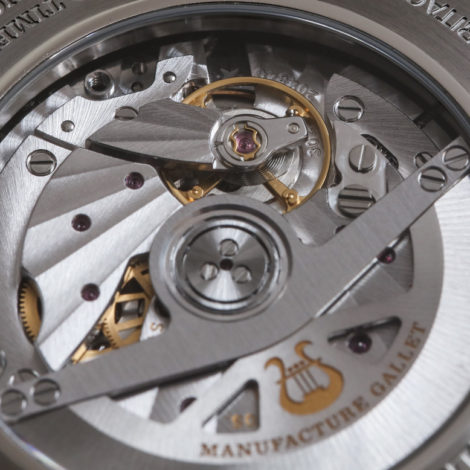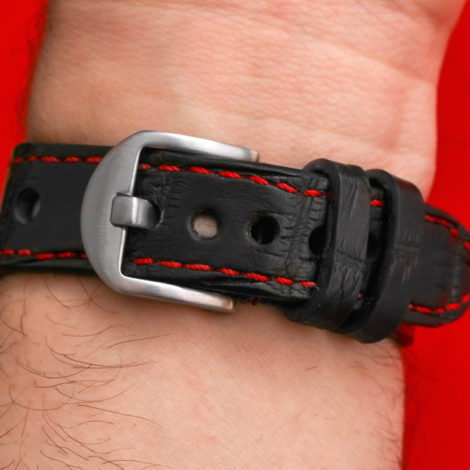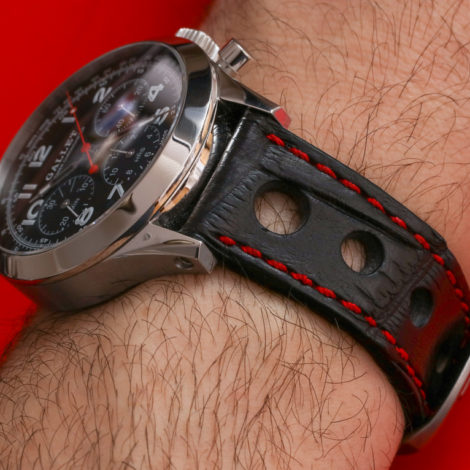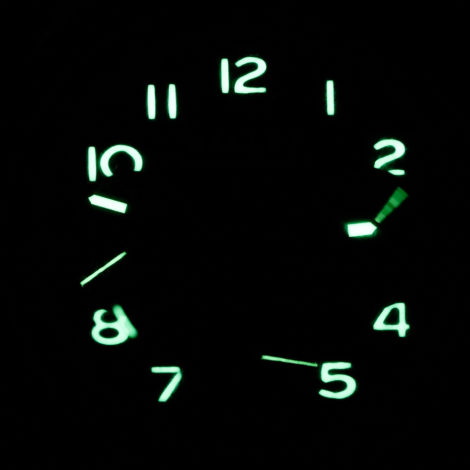
A system of screws that enter the rear of the case go all the way through and connect into the bezel. This secures the bezel, aiding in water resistance but also overall structural integrity. The case is very solid and components like thick screw-bars are used to secure the hand-stitched custom-made black alligator strap to the case. Though it would have been nice to see Gallet branding on the strap buckle.
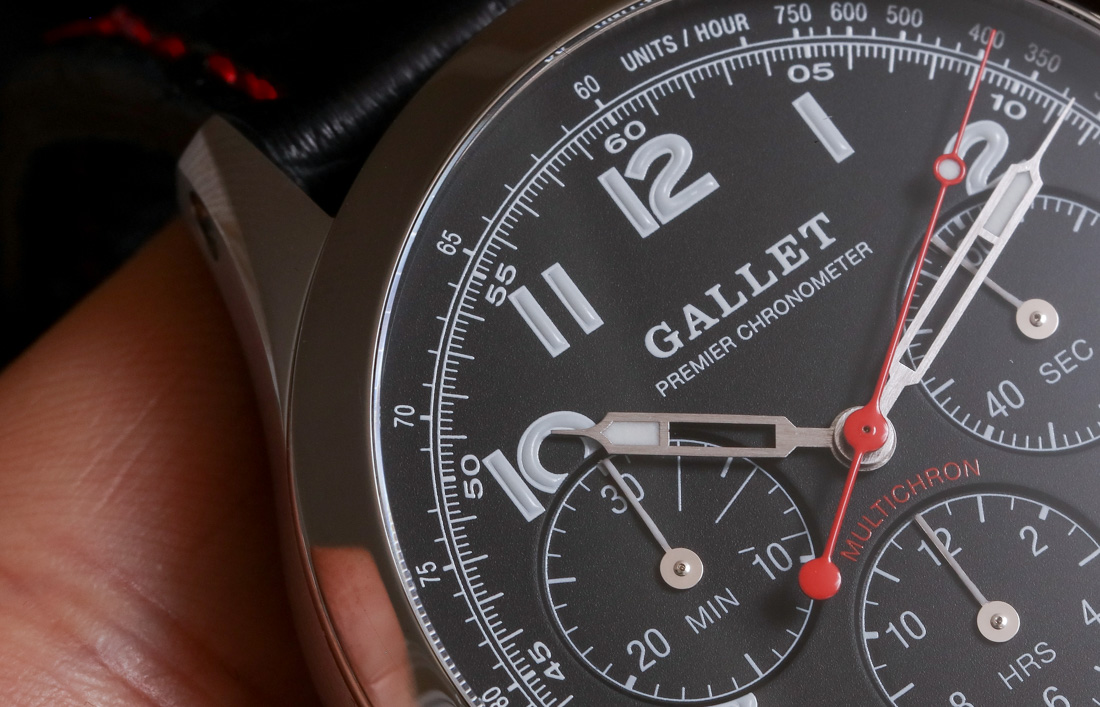
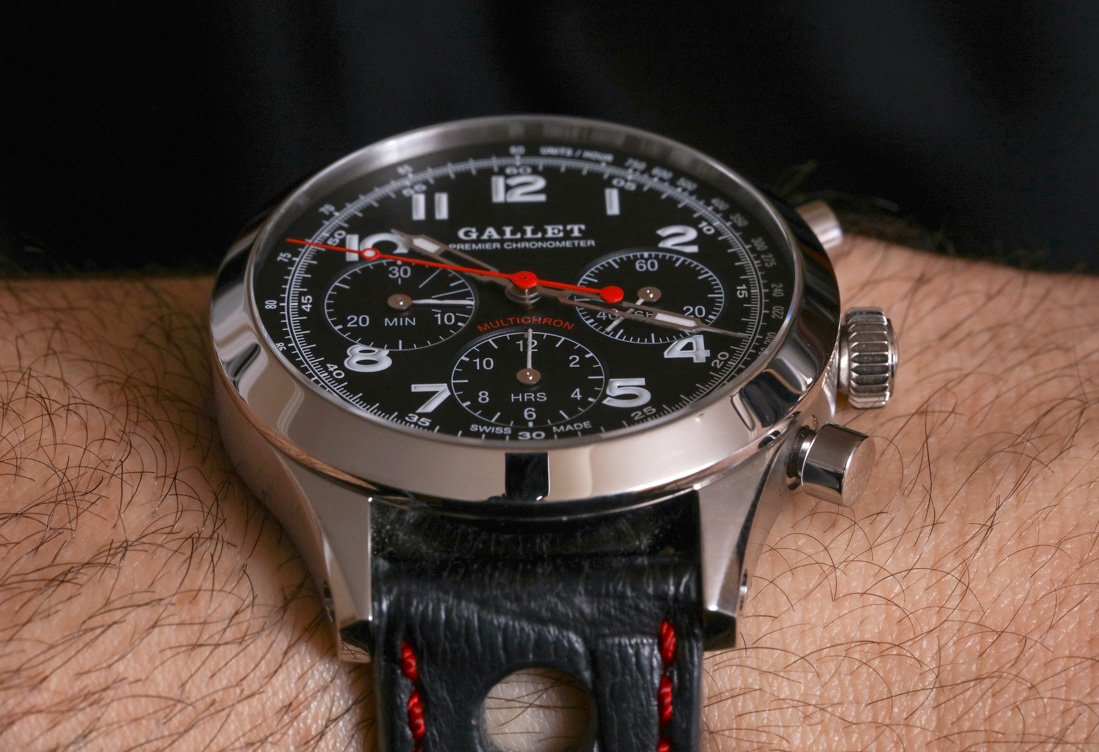
For Gallet the Racing Heritage Chronograph dial is a study in chronograph legibility. The dial is great but isn’t everyone’s idea of a “perfect design.” Chronograph sub-dials which overlap hour markers are a regular source of disagreement among watch lovers – but personally I don’t mind it when chronograph sub-dials overlap hour markers. I do appreciate the lack of a date window on the dial which would otherwise hamper a sense of symmetry. The vintage-style of the hour markers and the overall analog dial look is appealing. I don’t think Gallet would have been able to produce a “Heritage” watch without it looking conservative, but a lot of consumers are certainly looking for a more “timeless” look that Gallet offers in this model.

So the Gallet Racing Heritage Chronograph looks nice and is well made… is that all there is to it? No. The next two big areas of appeal are in the movement as well as the movement’s testing procedure that Gallet (again) refers to as “Premier Chronometer.” The basic tech specs of the Gallet calibre 550 automatic movement don’t tell the full story. The movement operates at 4Hz (28,800 bph) with a power reserve of 50 hours. The interesting parts are in the many tweaks and high-end components that lead to making a watch that is accurate to +/-2 seconds per day with a full 10-year warranty (double that of even Omega and Rolex).
The movement itself is a base automatic with a chronograph module on top of it which is produced by Vaucher. Again, Vaucher didn’t just use existing components for the Gallet calibre 550. First let me talk about anti-magnetism. The movement uses metal, but non-ferrous metal alloys which Gallet claims are not sensitive to magnetism. So like Omega’s METAS certified watches, the calibre 550 is not only displayed through the sapphire crystal caseback, but is also resistant to 15,000 Gauss. The practical implication is that the mechanical movement is not subject to error and damage from most magnetic fields.

Gallet also worked on a new balance wheel with Vaucher and created a new low-mass variable inertia version for the 550 movement. Gallet says that it “defies gravity,” and what they mean is that as the watch is moved into different positions as you wear it on your wrist, the accuracy and performance of the movement remain stable. In fact, testing the performance of the movement (while it is cased inside of the watch) is a key part of the Premier Chronometer testing process. Having two mainsprings also helps with accuracy. Dual mainspring movements aren’t new, but they aren’t as common in chronograph watches. The idea here is that the extra power needed to run the chronograph is distributed between two power sources versus one – and the result is better accuracy and performance over time.
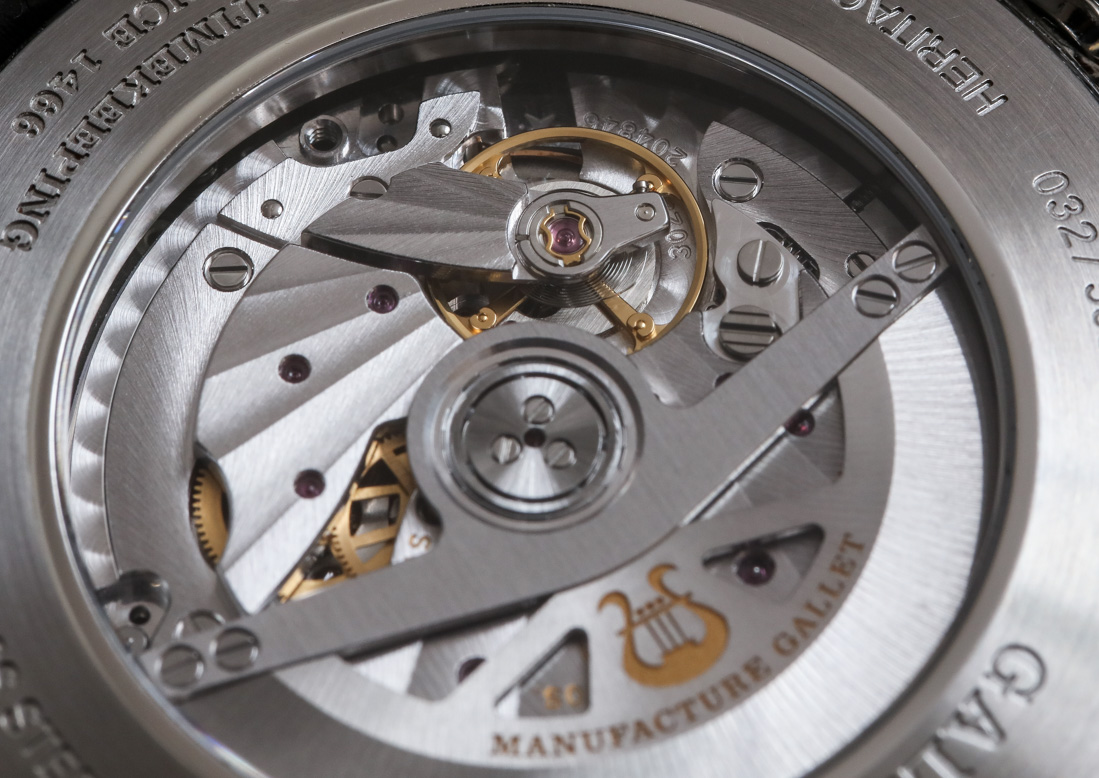
Gallet even points to “hundreds of tests and countless hours spent on calculations” related to figuring out how to offer ideal winding efficiency with the automatic rotor. In addition to the custom-designed rotor, the particular geometry of the weight was designed in order to maximize automatic winding efficiency while you wear the watch. Details like this aren’t entirely unheard of in the watch industry, but they are rarely done for specific watch models in low production units. This leads me to suggest that Gallet will have the most sales success with enthusiasts who are seeking out pursuits of horological perfection.
With a lot of unique parts, careful tweaking, and a focus on ideal performance, the Gallet calibre 550 movements are carefully tested prior to leaving the factory. Unlike mere COSC Chronometer certification, Vaucher’s Chronometric Cell tests movements cased inside of the watches themselves, and has more stringent standards. I’ll let you watch the video below on the Vaucher CLA Chronometric Cell testing, but suffice it to say that it results in a charming little certification card and a movement that performs very well.
In my experience wearing the Racing Heritage Chronograph the rate results were very good, meaning that upon checking it every few days the time appeared to be rather spot on. Less accurate mechanical watches typically need at least some visual time adjustment after a week or so of wear. Explaining the value proposition of the watch to those who don’t know about it is a challenge. The original retail price for the watch is a rather steep $12,500, which as I understand anticipates a traditional retail model. The good news is that you can buy the watch direct from Gallet (at this time) for $8,700. That’s still a lot of money but I can’t say that you aren’t getting a lot of watch. Having said that, it does require some education before one is able to arrive at the point where they understand the value. It took me at least a few hours of research and conversation – along with the ability to compare the Racing Heritage Chronograph to many other models out there.
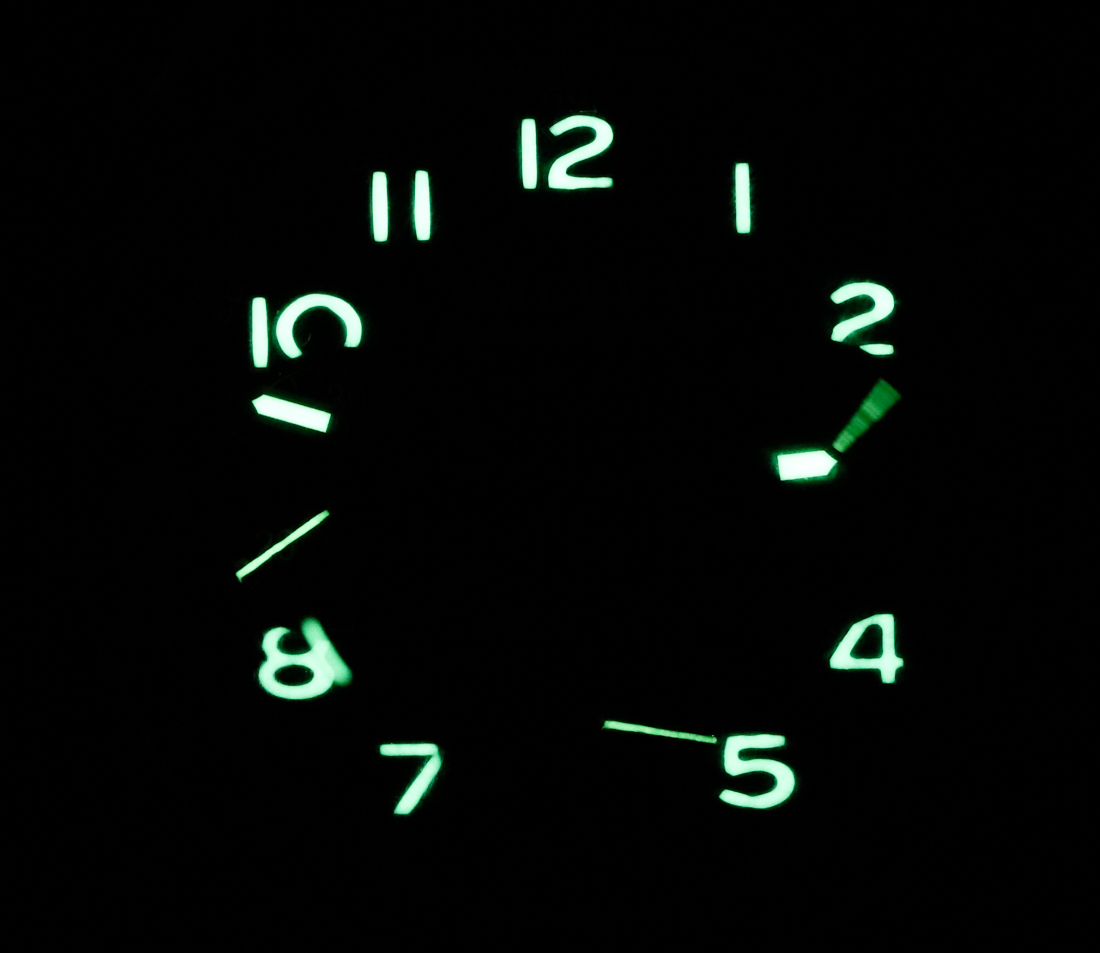

Quibbles? I have a few, sure. Even with the better hands, legibility for the hours and minutes still isn’t ideal – though I do understand that a lot of emphasis went into chronograph legibility, which is good. The watch strap buckle (at this time) is plain and doesn’t match the very refined look of the case. I also feel that Gallet might be accused of outsourcing much of the watch production to Vaucher by those who don’t quite understand the relationship between the companies. It is true that Gallet doesn’t make watches and relies entirely on suppliers. That in itself isn’t at all a bad thing. What can be a bad thing is when brands rely on suppliers and also don’t perform adequate quality control for the products internally.
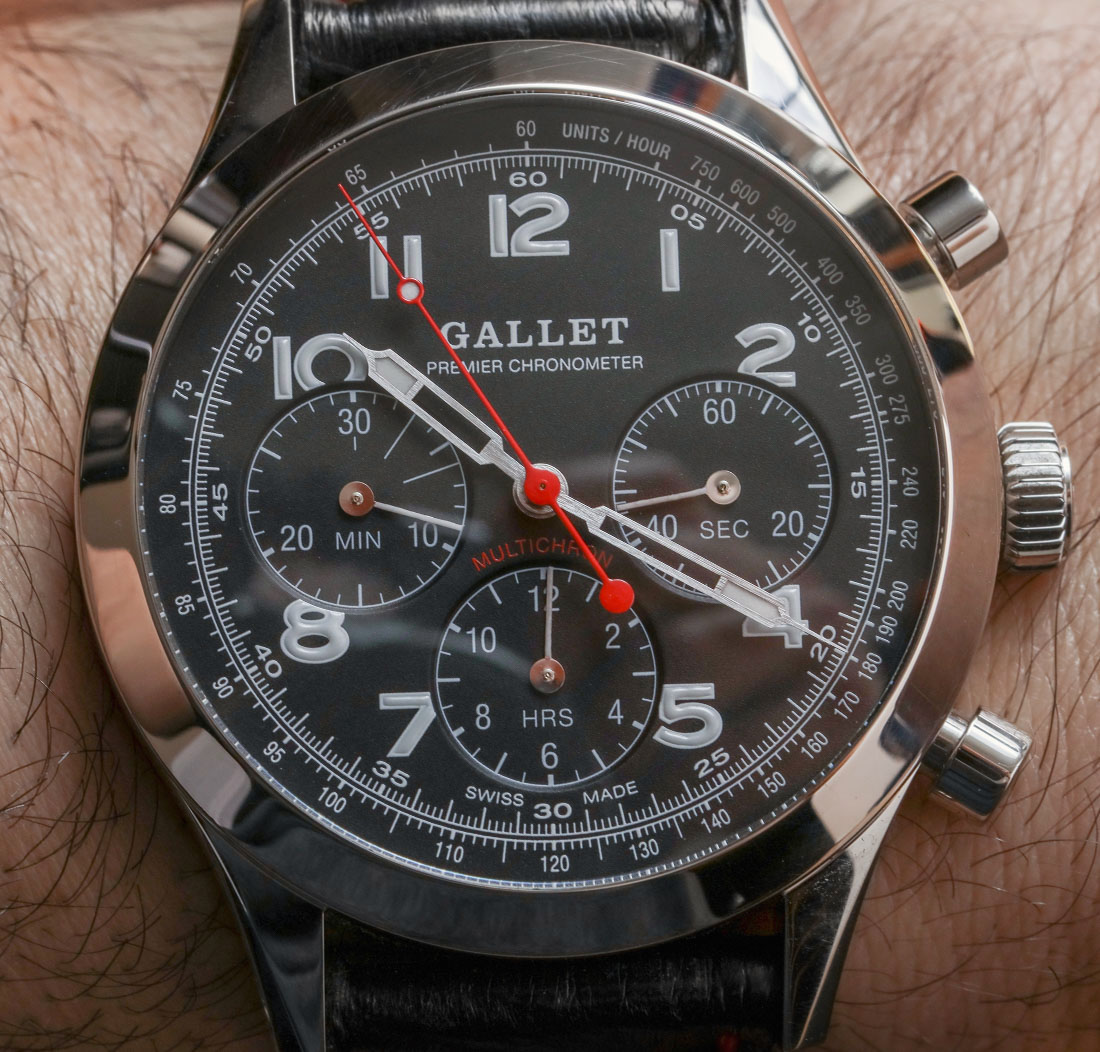
If the idea behind what Gallet did with the Racing Heritage Chronograph appeals to you, then I can’t see too many people being disappointed by a product like this. No, it isn’t the cheapest watch in the world, but yes there is actually a reason for why it costs as much as it does. It is sincerely my hope that the Racing Heritage Chronograph does well for them so that people can appreciate the effort that went into this watch. The Gallet Racing Heritage Chronograph is a limited edition watch of 500 pieces and has a direct to consumer price via the brand’s website of $8,700 USD. galletwatch.com
Necessary Data
>Brand: Gallet
>Model: Racing Heritage Chronograph
>Price: $12,500 USD retail price, $8,700 current direct to consumer price. Limited edition of 500 pieces
>Size: 40mm wide and 13.2mm thick
>When reviewer would personally wear it
: When wanting a sensible and conservative sport watch that has a story watch nerds will appreciate. Car (classic or new) gatherings are a perfect place for this timepiece.
>Friend we’d recommend it to first: “Gear head” watch lovers very much into movement mechanics and performance will likely be delighted by the effort that went into the Racing Heritage Chronograph movement. They should also happen to like the style as well.
>Best characteristic of watch: Great case finishing and overall quality. Comfortable to wear with a timeless design. Movement aesthetics, performance, and certification are definite highlights. Product from a very passionately run watch brand.
>Worst characteristic of watch: Difficult to explain value proposition to all but the most experienced watch collectors. Focus on chronograph readability inhibits time legibility to a degree. While close connection to Vaucher is a good thing, Gallet arguably loses out on some modern day legitimacy by not performing production tasks itself in the eyes of some collectors.

